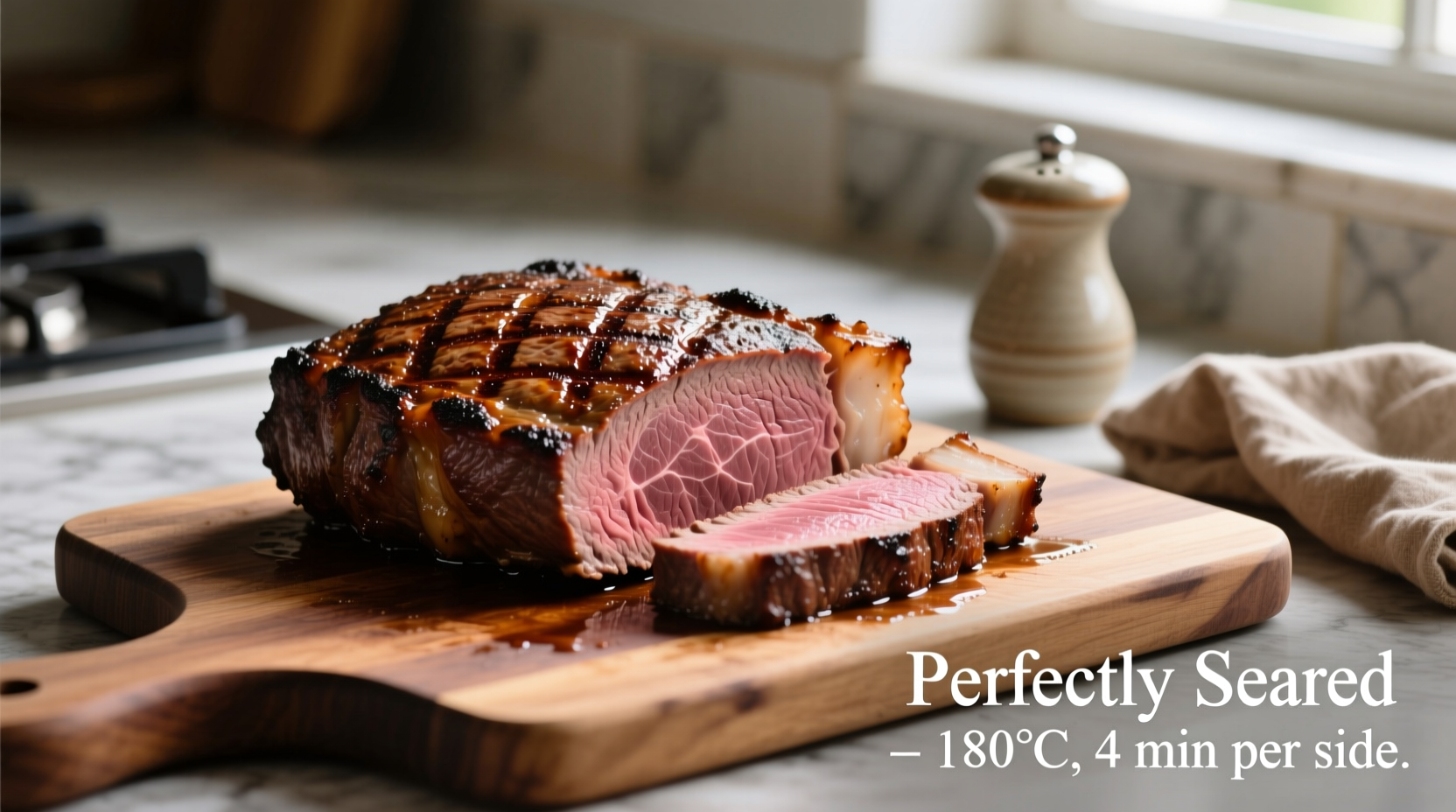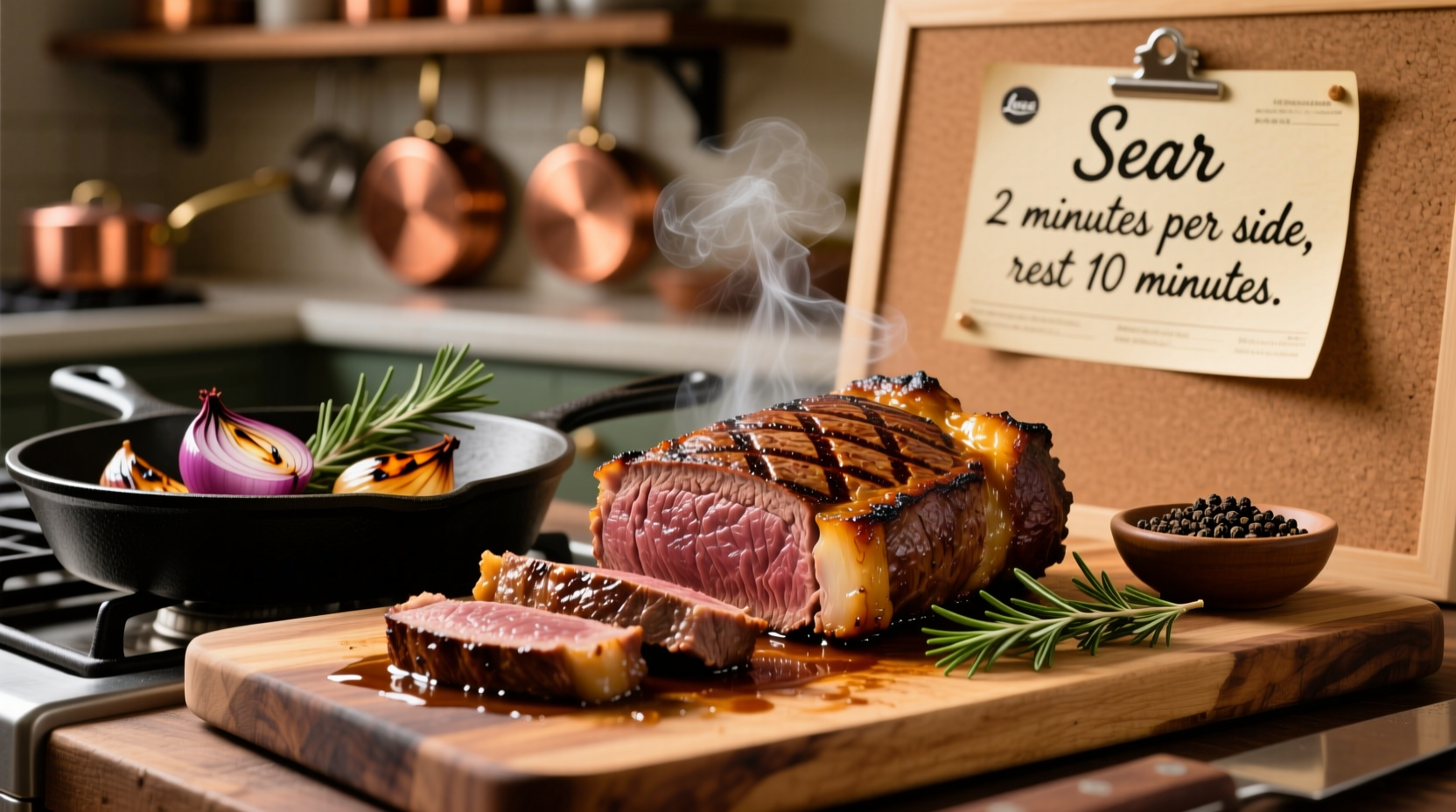Mastering how to cook sirloin roast transforms an expensive cut into a show-stopping meal. Unlike tougher roasts requiring slow cooking, sirloin's tenderness responds best to precise temperature control and proper resting. This guide delivers the exact techniques professional chefs use, eliminating guesswork for consistently perfect results whether you're cooking for weeknight dinner or holiday celebration.
Understanding Sirloin Roast: Your Foundation for Success
Sirloin roast comes from the rear section of the cow, offering excellent marbling with less connective tissue than chuck or round roasts. This means it cooks faster but requires careful monitoring to prevent drying out. The top sirloin roast (boneless) provides uniform cooking, while the sirloin tip roast benefits from slightly longer cooking times due to its shape.
According to USDA Food Safety and Inspection Service guidelines, beef roasts should reach minimum internal temperatures of 145°F (medium) with a 3-minute rest time for food safety. However, professional chefs consistently recommend pulling sirloin roast at 130-135°F for medium-rare, as carryover cooking during resting will bring it to perfect doneness without overcooking.
Selecting Quality Meat: What to Look For
Begin with a well-marbled sirloin roast displaying bright red color and fine-grained texture. Look for even thickness throughout the cut to ensure uniform cooking. Avoid pieces with excessive external fat or uneven coloring. The ideal sirloin roast should feel firm yet slightly yielding to the touch.
When purchasing, ask your butcher for a 'center-cut' sirloin roast, which typically offers the most consistent shape and cooking properties. This cut usually comes from the top sirloin butt, providing superior tenderness compared to sirloin tip roasts.

Preparation Techniques That Make the Difference
Proper preparation sets the stage for exceptional results when learning how to cook sirloin roast. Remove the roast from refrigeration 1-2 hours before cooking to bring it to room temperature—this prevents uneven cooking. Pat the surface completely dry with paper towels; moisture is the enemy of proper searing.
Season generously with coarse salt and freshly ground black pepper at minimum. For enhanced flavor, consider a simple rub of garlic powder, onion powder, and dried thyme. Avoid wet marinades which can interfere with proper browning. Professional chefs often recommend dry brining: salting the roast 12-24 hours in advance and storing uncovered in the refrigerator allows salt to penetrate deeply while drying the surface for superior searing.
Cooking Process: Precision Temperature Control
The reverse sear method delivers the most consistent results for how to cook sirloin roast perfectly. This technique involves slow-roasting first, then searing at high heat. Alternatively, the traditional method (sear first, then roast) works well with proper temperature management.
| Cooking Method | Advantages | Best For |
|---|---|---|
| Traditional (Sear First) | Develops rich crust early; familiar technique | Cooks with experience monitoring temperatures |
| Reverse Sear | More even doneness; less risk of overcooking | Beginners; thicker cuts; special occasion roasts |
| Sous Vide + Sear | Precise temperature control; maximum tenderness | Advanced home cooks with equipment |
Traditional Method Step-by-Step
- Preheat oven to 450°F
- Sear roast on all sides in hot oil until deeply browned (3-4 minutes per side)
- Reduce oven temperature to 325°F
- Insert meat thermometer into thickest part
- Roast until thermometer reads 130-135°F for medium-rare (approximately 15-20 minutes per pound)
- Remove when 5°F below target temperature (carryover cooking will raise it during resting)
Temperature Timeline: The Science Behind Perfect Cooking
Understanding the temperature progression during cooking helps prevent common mistakes when preparing sirloin roast. As the meat cooks, proteins denature in stages:
- 100-120°F: Connective tissues begin breaking down, but meat remains raw
- 120-130°F: Myoglobin (red juice) starts coagulating—medium-rare zone
- 130-140°F: Medium; ideal for sirloin's tenderness
- 140-150°F: Medium-well; increasing toughness as moisture evaporates
- 150°F+: Well-done; significant moisture loss and toughening
Food safety research from the American Meat Science Association confirms that holding beef at 130°F for over 11 minutes achieves pasteurization equivalent to the USDA's 145°F standard, making medium-rare sirloin roast both safe and optimal for quality.
Resting and Slicing: The Critical Final Steps
Resting your sirloin roast for 15-20 minutes after cooking allows juices to redistribute throughout the meat. Cutting too soon releases precious juices onto the cutting board rather than staying in the meat. During this resting period, the internal temperature typically rises 5-10°F (carryover cooking).
When slicing, always cut against the grain (perpendicular to muscle fibers) in 1/4 to 1/2 inch thick slices. This shortens the muscle fibers, creating a noticeably more tender eating experience. Use a sharp carving knife and steady pressure for clean slices without shredding.
Common Mistakes to Avoid
Even experienced cooks make these critical errors when preparing sirloin roast:
- Skipping the thermometer: Guessing doneness leads to overcooked, dry results
- Cutting too soon: Resting is non-negotiable for juicy results
- Overcrowding the pan: Prevents proper browning during searing
- Using wet marinades: Creates steam instead of sear on the roast surface
- Incorrect oven temperature: Too high causes uneven cooking; too low extends cooking time unnecessarily
Serving Suggestions for Complete Meal Success
Pair your perfectly cooked sirloin roast with complementary sides that enhance without overwhelming. Classic options include roasted root vegetables, garlic mashed potatoes, and seasonal green vegetables. For sauce, a simple pan jus made from the drippings provides rich flavor without masking the beef's natural taste.
Leftover sirloin roast makes excellent sandwiches, salads, or steak tacos. Store leftovers in an airtight container in the refrigerator for up to 4 days, or freeze for longer storage. When reheating, use gentle methods like a low-temperature oven or sous vide to maintain tenderness.
How long to cook sirloin roast per pound?
At 325°F, cook sirloin roast for approximately 15-20 minutes per pound for medium-rare. Always use an instant-read thermometer rather than relying solely on time, as oven temperatures and roast shapes vary. Remove the roast when the thermometer reads 130-135°F, as carryover cooking will raise the temperature during resting.
What temperature is medium for sirloin roast?
Medium doneness for sirloin roast registers at 140-145°F internal temperature. However, professional chefs typically recommend removing the roast at 135-140°F and allowing it to rest, as carryover cooking will bring it to perfect medium. Note that sirloin roast becomes noticeably less tender beyond medium, so medium-rare (130-135°F) is generally preferred for this cut.
Should I sear sirloin roast before roasting?
Yes, searing creates the flavorful Maillard reaction on the surface. Heat oil in an oven-safe pan until shimmering, then sear all sides for 3-4 minutes until deeply browned before transferring to the oven. This step develops complex flavors and creates an appealing crust. For thicker roasts, consider the reverse sear method (roast first, then sear) for more even doneness throughout.
How long should sirloin roast rest before slicing?
Sirloin roast should rest for 15-20 minutes before slicing—this allows the muscle fibers to relax and reabsorb juices. Resting time correlates with roast size; larger roasts need longer resting periods. Cover loosely with foil to maintain temperature without steaming the surface. Cutting too soon releases precious juices onto the cutting board rather than staying in the meat.











 浙公网安备
33010002000092号
浙公网安备
33010002000092号 浙B2-20120091-4
浙B2-20120091-4